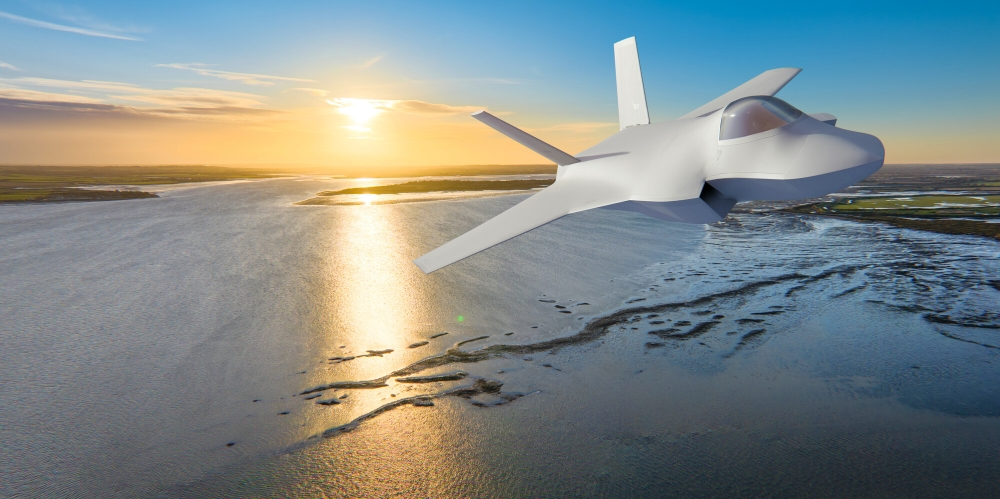
During RIAT, BAE Systems has released a new computer graphic image of the national demonstrator being built on the way to the Global Combat Aircraft Programme’s “true” prototype, which should follow around 2030. The UK demonstrator is to fly by end 2027 or early 2028 and is in production right now: according to the Company, two thirds of the aircraft’s “structural weight” are now being manufactured.
The build of the demonstrator involves the construction of some of the largest ever composite components ever made for combat aircraft in the UK. One such component is the centre fuselage skin.
The Flying Combat Air Demonstrator, which will be powered by 2 Eurojet EJ200 engines (same as TYPHOON) will be a very large aircraft, although BAE has not supplied firm numbers yet.
The demonstrator uses a cropped delta wing shape of a design evolved from earlier concepts and also seems to have a remarkably wide nose, an hint of the size and capability of the main radar sensor planned.
Our only clue to the potential size of the demonstrator came in 2023 when testing of the propulsion configuration on a ground rig in Filton was unveiled: the stealthy air ducts are reportedly 10 meters long, to which the length of the EJ200 must be added. This means that the demonstrator will be, from air duct to engine nozzles, already be as big or indeed longer as an entire TYPHOON.
The demonstrator has some striking similarities to the F-35, mainly due to the diverterless supersonic inlet (DSI)-type of air intakes for the engines and the cockpit area. The CGI is most notable, however, for what it chooses not to display, including the engine nozzles, detail of the skin and fuselage and arrangement of weapon bays.
From earlier information (and from tests conducted on the sled) we know a modified Martin Baker US16E ejector seat should be used, and BAE said in 2023 that the cockpit would use a sidestick arrangement. While advanced, the demonstrator’s cockpit will not use Virtual Reality like has been proposed for GCAP itself.
BAE adds that pilots have accumulated over 300 hours of simulated flying hours on the demonstrator, signaling further digital design experimentation and refinement conducted since last time this data was shared: in 2024, the hours had been 215.
This digital experimentation happens mainly, if not exclusively, within Hangar 5 at BAE System’s Warton plant, where 4 key integrated development rigs were said to be in use already over the course of 2023 and 2024: one for the cockpit, one for flight control system management, one for computing and models, and one for the utility management system.
The demonstrator will be to GCAP something comparable to what EAP was to TYPHOON. It’s important to demonstrate technical readiness for a project of this scale: the UK has not put a supersonic demonstrator into the air for 40 years, since the already mentioned EAP.
In regards to stealth, some experience was of course gathered with REPLICA, a non-flying testbed which went through exhaustive stealth trials at the end of the 90s when the Future Offensive Air System project was supposed to lead to a dedicate replacement for TORNADO which however never went ahead. The UCAV demonstrator program TARANIS also helped develop sovereign expertise in stealth in more recent times.
Follow us on Telegram, Facebook and X.








.png)
